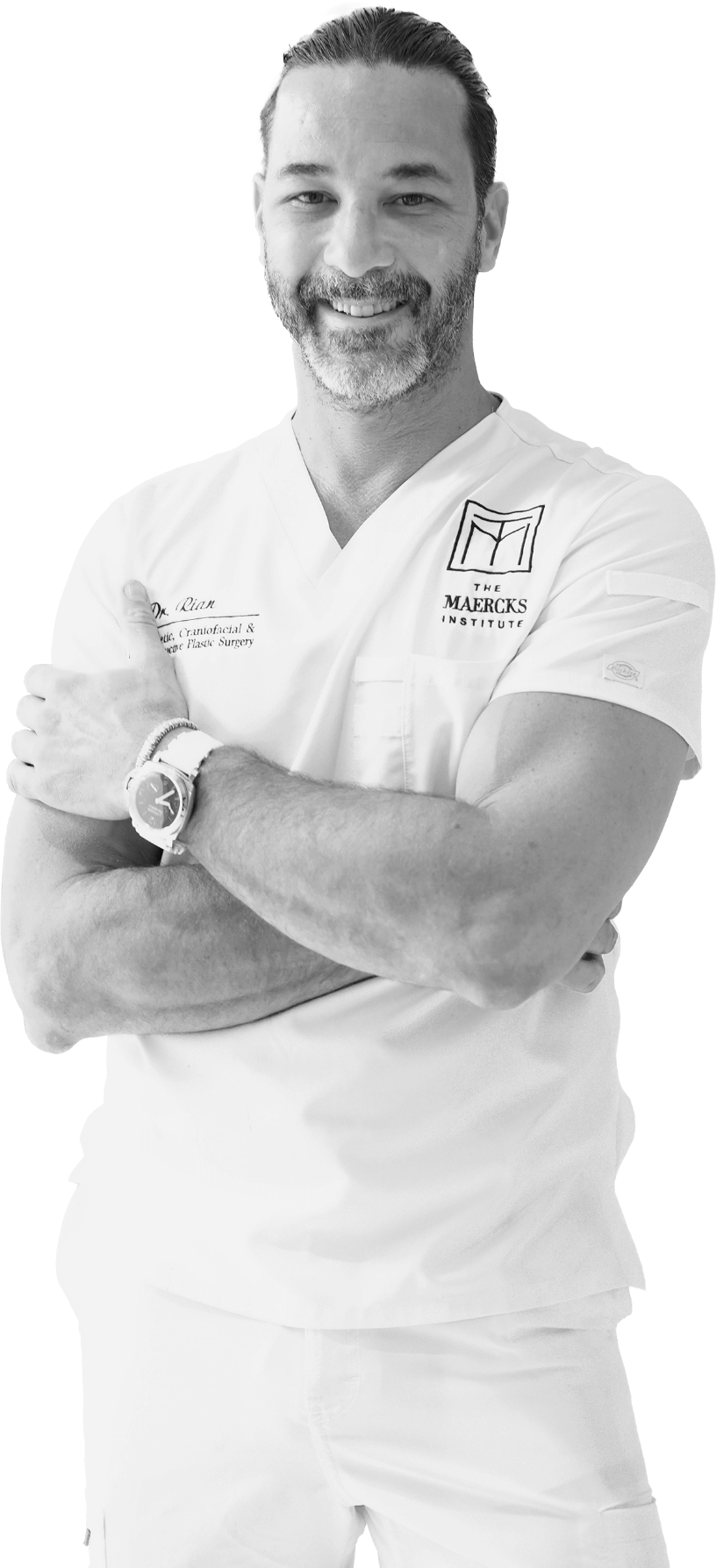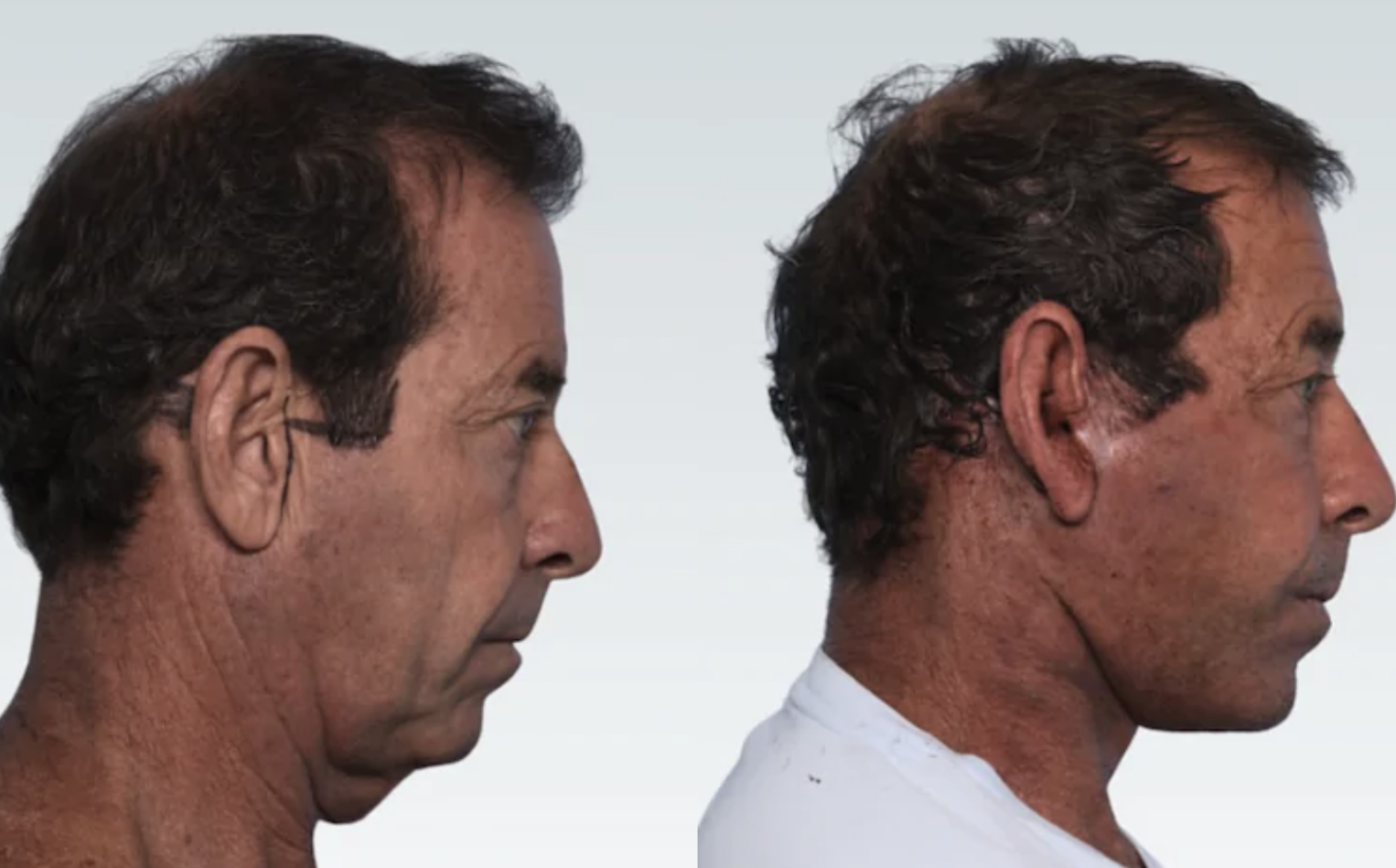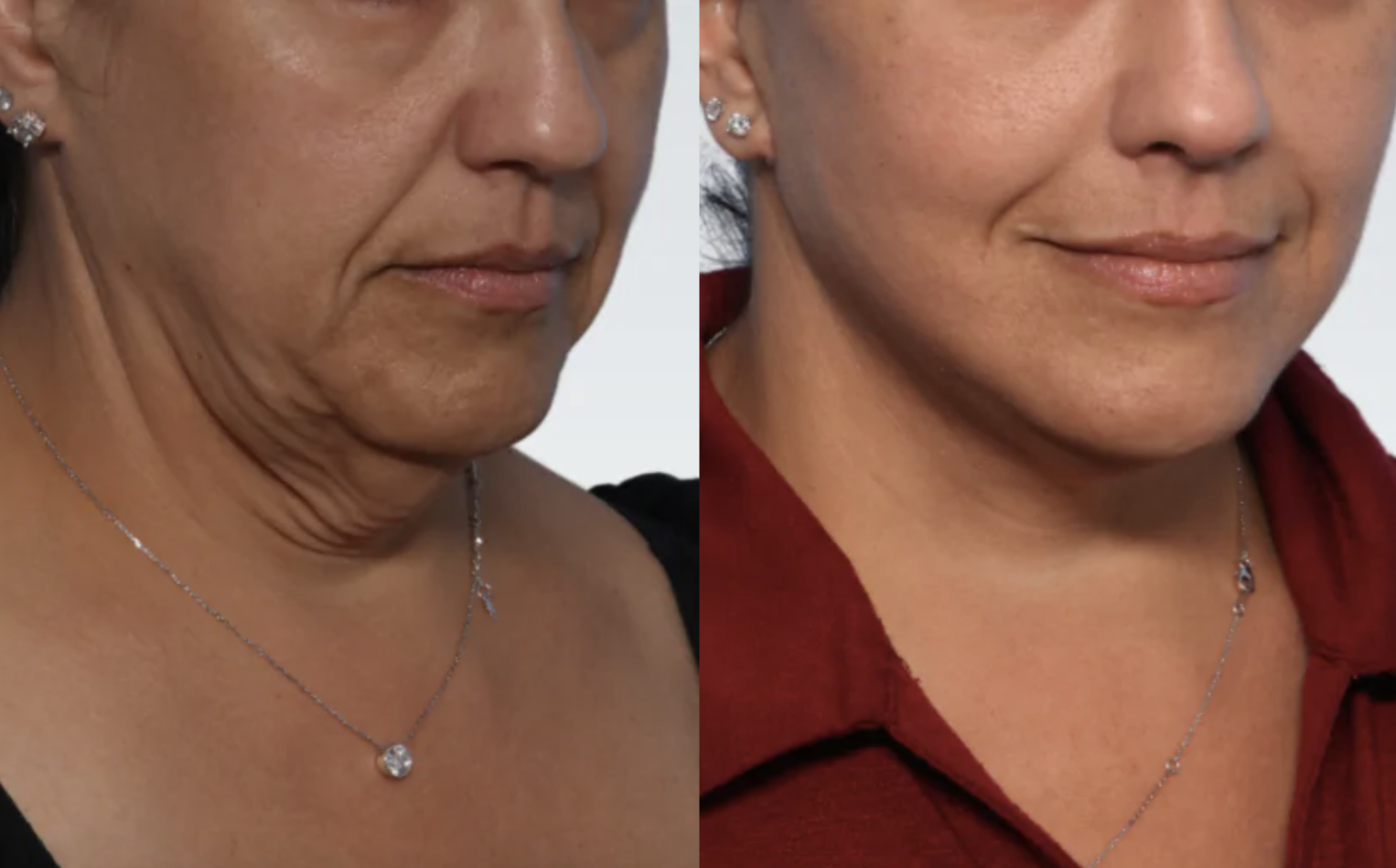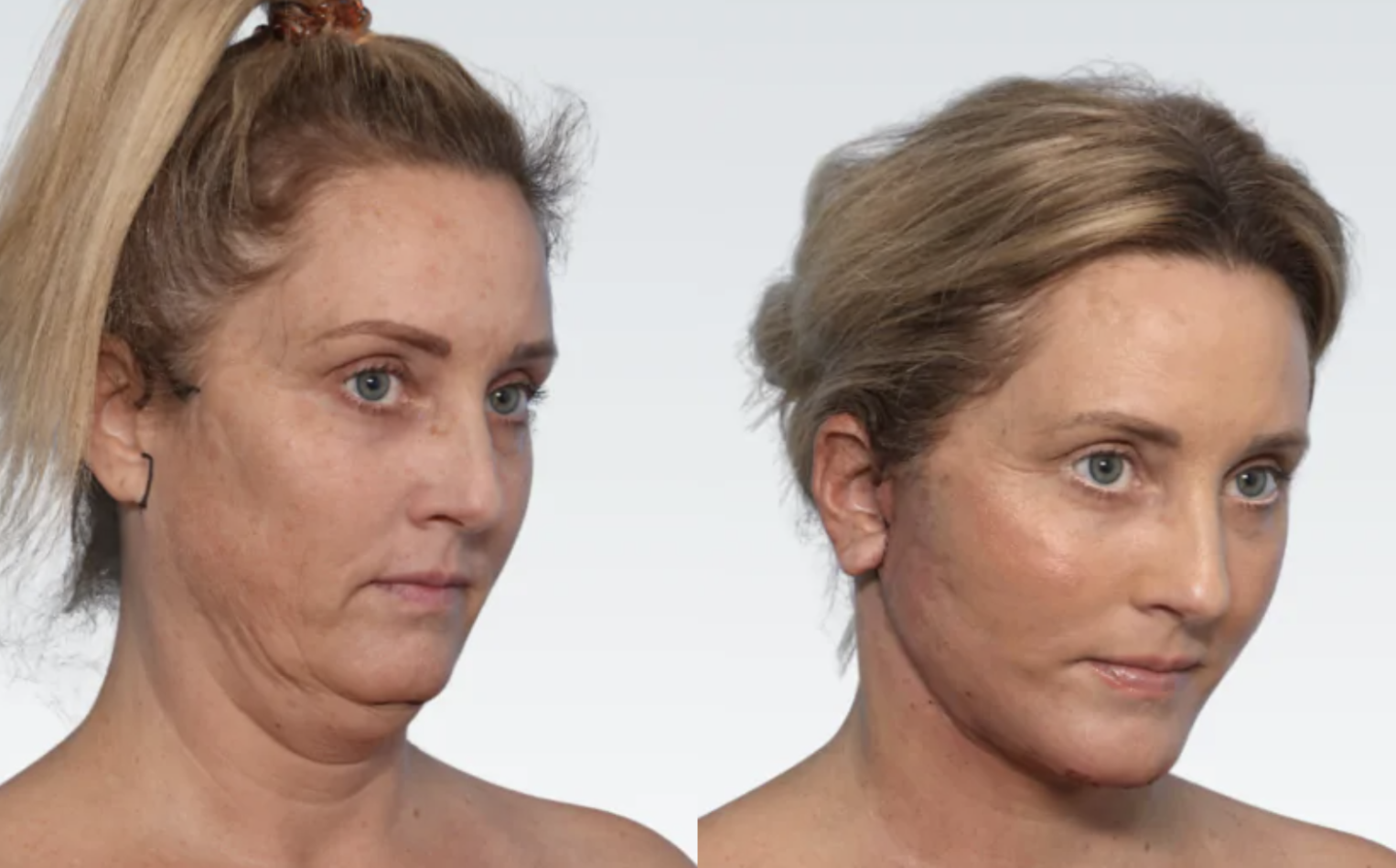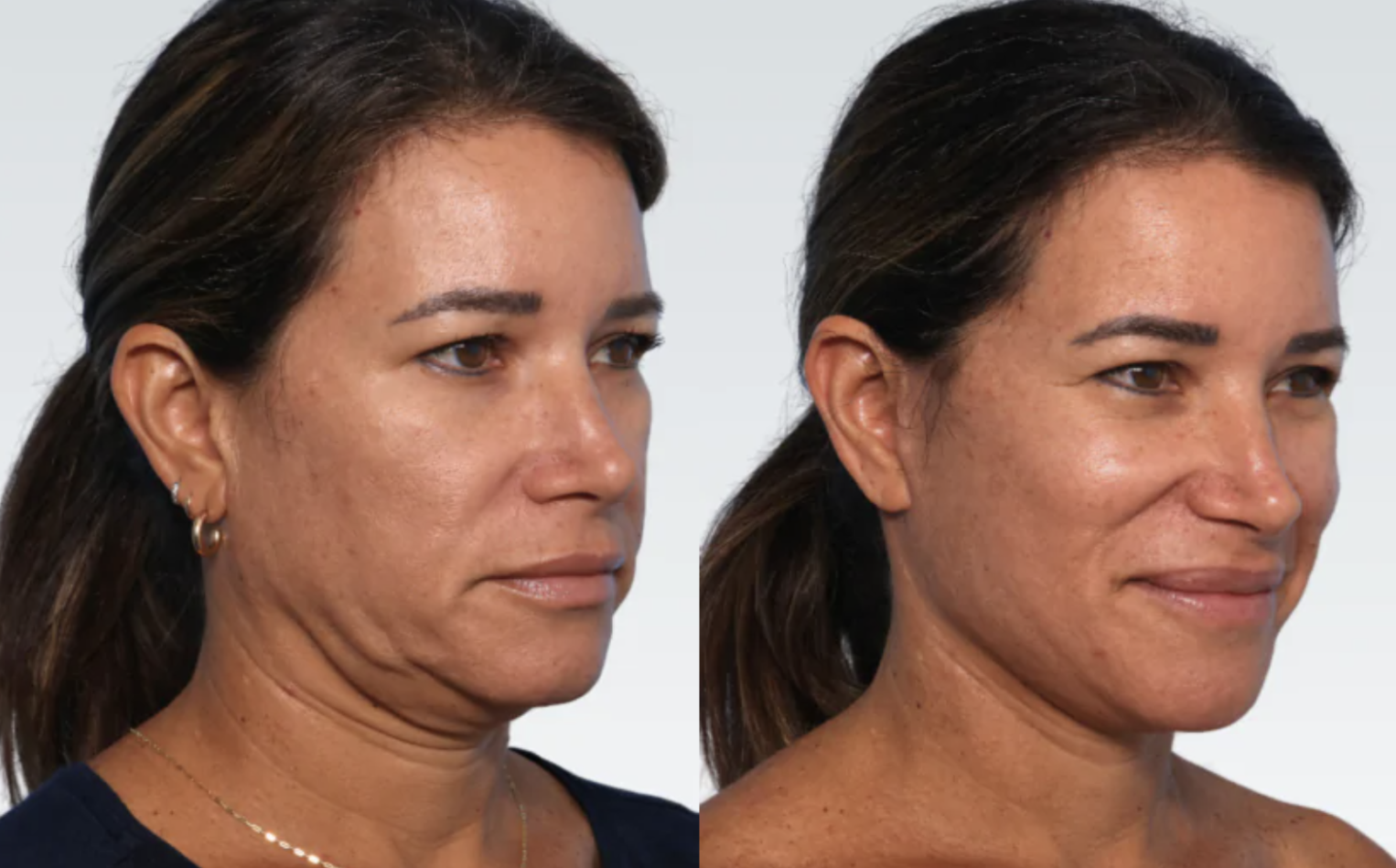Rhinoplasty Revision
Conveniently located to serve the areas of Miami, FL

Revision rhinoplasty, often referred to as secondary rhinoplasty, is a surgical procedure that aims to correct or improve the results of a previous nose surgery (rhinoplasty). Many individuals choose revision rhinoplasty when they are unhappy with the appearance of their nose following an initial surgery, or when functional issues such as breathing difficulties arise. This complex procedure requires expertise in nasal reconstruction and careful planning to achieve the desired aesthetic improvement and restore nasal function.
Here at The Maercks Institute, located in Miami, Florida, Dr. Rian Maercks specializes in rhinoplasty of all types, employing advanced techniques to provide patients with optimal outcomes. If you would like to explore your nose-restructuring possibilities, please schedule a consultation with Dr. Maercks to discuss your revision rhinoplasty, its types and benefits, your candidacy, preparation processes, and what to expect during recovery. This is the first step toward enhancing your appearance and confidence. If you have any questions, please call our practice at (305) 414-0934.
Contents
About Revision Rhinoplasty
Revision rhinoplasty is a specialized procedure designed to address both aesthetic and functional concerns related to the nose after a prior rhinoplasty. Individuals may seek revision surgery for several reasons:
- Dissatisfaction with the new nose shape, size, or symmetry
- Complications arising from the first procedure, including scarring or cartilage issues
- Breathing problems caused by structural changes made during the initial surgery
Understanding the anatomy of the nose is crucial. The nose is made of bone, cartilage, skin, and soft tissue that work together to create a harmonious appearance and proper function.
Rhinoplasty is one of the most prevalent cosmetic surgeries performed worldwide. Statistics show that about 15-20% of rhinoplasty patients seek some form of revision within five years of their initial surgery. (1) Factors contributing to these requests include inadequate consultation or poor surgical technique, unrealistic patient expectations, and inherent anatomical complexities unique to each individual.
Although rhinoplasties are complex procedures, thousands are performed every year, and there are many methods available to correct nasal issues in both primary and revisional rhinoplasty. Before pursuing a revision rhinoplasty, it is essential to understand the nuances involved in the surgery, as well as the potential risks associated with rebuilding and reshaping the nasal structures. The revisions often necessitate reconstructive techniques, such as cartilage grafting to support the nasal framework and restore symmetry.
Benefits
Undergoing a revision rhinoplasty will correct issues brought on by faults in your primary rhinoplasty while also enhancing the results of your first procedure. At The Maercks Institute, we help patients realize results like:
- Improved aesthetic appearance: Provides an opportunity to achieve the desired look that may not have been accomplished in the first surgery.
- Enhanced nasal function: For those experiencing breathing difficulty post-surgery, this procedure can help restore airflow.
- Correction of structural defects: Addresses any defects in the nasal structure that were created in the first surgery.
- Increased self-confidence: An improved appearance can lead to greater self-esteem and overall satisfaction with one’s looks.
- Personalized surgical techniques: Revision procedures focus specifically on individual anatomical circumstances and personal goals.
- Utilization of advanced techniques: Patients benefit from modern advancements in rhinoplasty that may not have existed during their original surgery.
- Comprehensive approach: Dr. Maercks takes a holistic view, ensuring that all aspects of nasal aesthetics and function are considered.
- Supportive postoperative care: Ensures proper management and healing of the nasal structures following surgery.
Candidates
Revision rhinoplasty is specifically designed for individuals whose original rhinoplasty has left them with unsatisfactory results or new nasal complications. Poor surgical techniques can lead to breathing issues or a nose that does not align with a patient’s original expectations. If this resonates with you, then you can improve your condition with a revision rhinoplasty. Aside from these qualifications, patients should be in good overall health, maintain realistic expectations for their results, not smoke, and be willing to collaborate with Dr. Maercks and his care team to optimize results.
Personal Consultation
The nasal renovation journey begins with a personal consultation at The Maercks Institute. During this important meeting, Dr. Maercks will assess your medical history, discuss your aesthetic and functional concerns, and conduct a detailed examination of your nasal structure. This evaluation is critical in understanding the nature of your previous surgery and identifying areas needing improvement. By forming a comprehensive plan, Dr. Maercks ensures that the subsequent surgical approach aligns with your body’s unique anatomy and your desires. Patients often feel relieved and optimistic after learning about the solutions available for their specific revisions.
Preparation
Once your revision rhinoplasty appointment is set, you will receive detailed preoperative instructions. These instructions will be nearly identical to the preparation instructions you received for your original rhinoplasty (of course, if you did not receive instructions, that could be part of the reason you require a revision). Please discontinue and/or avoid any blood thinning medications, supplements, or substances like aspirin, ibuprofen, St. John’s Wort, alcohol, and others. Nicotine use should also be avoided. Please plan to fast for a set timeframe before your treatment and enlist a trusted individual to drive you to and from your rhinoplasty.
Procedure
Part of the reason why rhinoplasties are such complex procedures is that each nose is unique and requires specialized, detailed, and meticulous planning to achieve the best possible results. This is especially true for revision rhinoplasty, where corrections have to be made by undoing or augmenting a past procedure. Planning will also account for a patient’s genetics, ethnicity, facial anatomy, and more in relation to a patient’s current nose and their ultimate goals.
Most rhinoplasties are performed as either open rhinoplasty or closed rhinoplasty. In an open rhinoplasty, incisions are made around the nose, and the skin is lifted to provide access to the intricate muscle, bone, and cartilage structures that shape the nose. After Dr. Maercks makes these corrections, the skin is gently redraped over the nose. Open rhinoplasties are generally reserved for more significant procedures that require more corrections and fine adjustments. (2) By fully lifting the skin, Dr. Maercks has complete access to structural tissues. Most revision rhinoplasties will be open procedures.
Closed rhinoplasty, contrastingly, is performed by accessing structural elements through the nostrils. While this avoids incisions, access is significantly limited. Revision rhinoplasty can also be performed through closed methods, but this is usually reserved for patients requiring minor corrections, like septum adjustment. (2)
Recovery

During recovery, patients typically experience swelling and bruising around the nose and eyes for a few days following their procedure. This can be mitigated with cold compresses, light walks, and anti-inflammatory medications, but only take these if Dr. Maercks allows you to. Patients are recommended to sleep on their backs with their heads elevated. Strenuous activities should be avoided for at least two weeks. If you can take precautions to prevent excessive sneezing, like wearing a mask and taking allergy medications, then please do so. Many patients find relief from discomfort using prescribed pain medication.
Results
Patients will see gradual improvements in nasal appearance and function over weeks and months. Full results can take up to one year to manifest completely. Successful revision rhinoplasty can lead to significant improvements in both aesthetics and functionality. Patients often observe a more proportionate, symmetrical nose while also gaining relief from breathing challenges. The transformative effects can greatly enhance confidence and quality of life. Skilled techniques ensure that scars are minimal and inconspicuous.
Other Procedures
The Maercks Institute offers various dermal filler treatments to add mass to parts of the face. These procedures can be used in a liquid rhinoplasty, also known as nonsurgical rhinoplasty. Patients seeking minor corrections to their noses can often see the results they want with these treatments. Because dermal fillers are only semi-permanent and are reversible, many patients will use these to “trial-run” their rhinoplasty and visualize their results before undergoing surgery. This method is especially beneficial for revision rhinoplasty patients who may want to experiment with their possible results further before undergoing another procedure.
Cost of Revision Rhinoplasty in Miami
When you discuss your procedure with Dr. Maercks at a consultation, you will receive a price quote. Our practice also offers financing options to those who qualify. If you have any questions about scheduling your consultation or procedure or about payments, pricing, our practice, or more, please do not hesitate to speak with one of our expert staff members by calling our Miami office at (305) 414-0934.
FAQ
What makes revision rhinoplasty different from primary rhinoplasty?
Revision rhinoplasty usually addresses previous surgical outcomes, working with potentially altered nasal structures, hence requiring advanced techniques and adaptation.
Is revision rhinoplasty common?
Approximately 15-20% of patients are reported to pursue revision rhinoplasty within five years following an initial surgery due to dissatisfaction or complications.
Is age a factor when planning revision rhinoplasty?
Age alone is not a barrier, but being in good health and having realistic expectations are crucial components of candidacy. How long does it take to recover from revision rhinoplasty? We generally suggest allowing a couple of weeks for most daily activities and a few months for full functionality. The final results will evolve over the year.
References
- Loyo M, Wang TD. Revision Rhinoplasty. Clinics in Plastic Surgery. 2016;43(1):177-185. doi:https://doi.org/10.1016/j.cps.2015.09.009
- Fichman M, Piedra Buena IT. Rhinoplasty. PubMed. Published 2020. https://www.ncbi.nlm.nih.gov/books/NBK558970/
